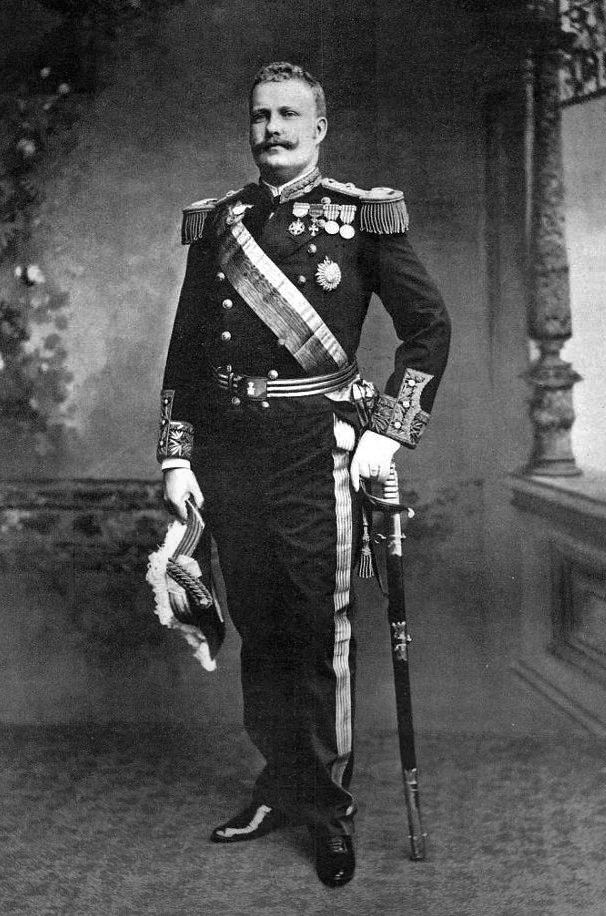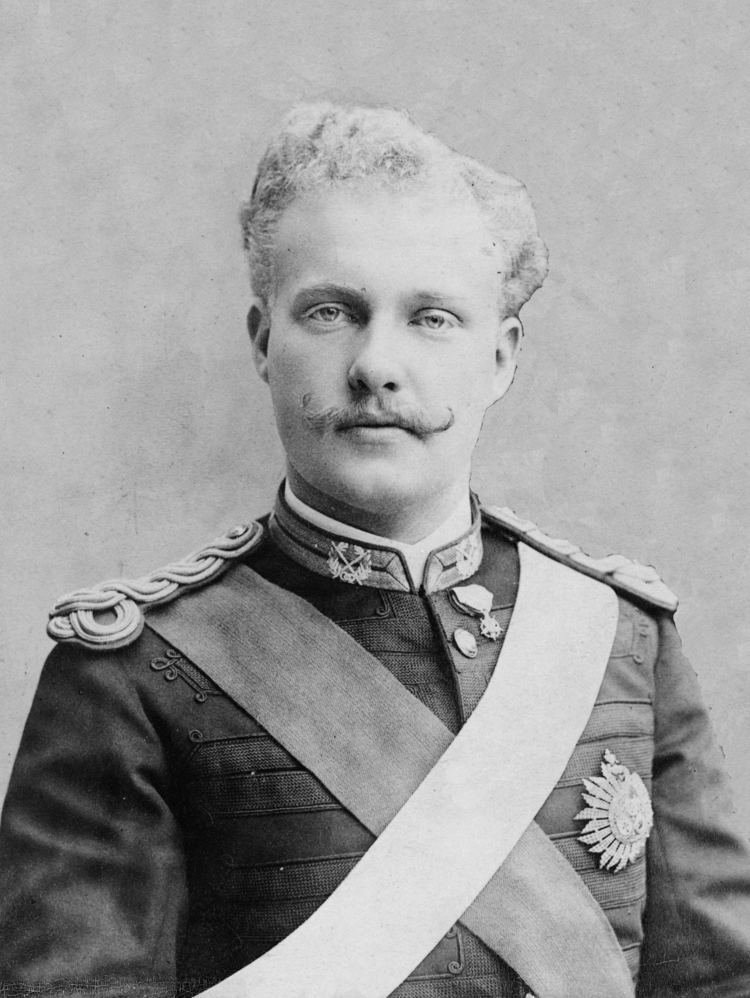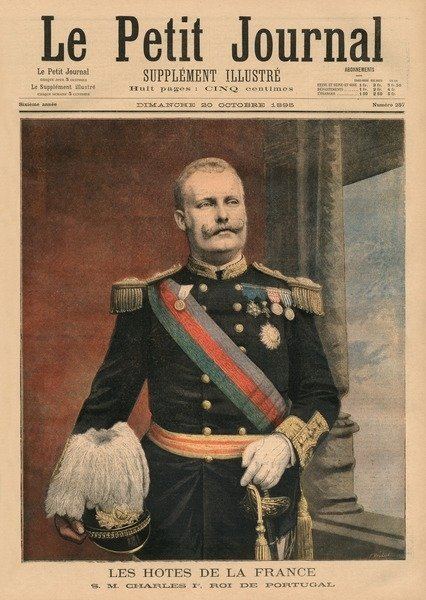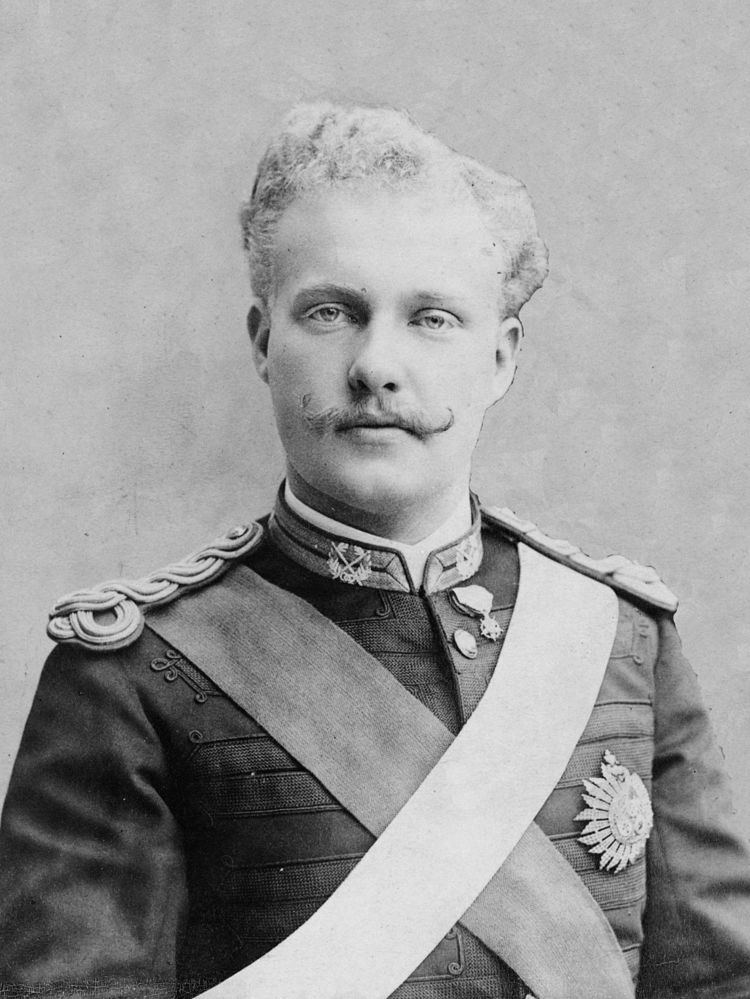Acclamation 28 December 1889 Name Carlos of | Successor Manuel II Predecessor Luis I | |
 | ||
Reign 19 October 1889 –1 February 1908 Prime Ministers See listJose Luciano de CastroAntonio SerpaJoao CrisostomoJose Dias FerreiraHintze RibeiroJoao Franco Spouse Amelie of Orleans (m. 1886–1908) Assassinated February 1, 1908, Praca do Comercio Children Manuel II of Portugal Parents Maria Pia of Savoy, Luis I of Portugal Cousins Victor Emmanuel III of Italy, Ferdinand I of Romania, Frederick Augustus III of Saxony, Prince Luigi Amedeo, Princess Mathilde of Saxony Similar People Manuel II of Portugal, Amelie of Orleans, Luis Filipe - Prince Royal of, Luis I of Portugal, John IV of Portugal | ||
Rei dom carlos i de portugal king carlos i of portugal
Dom Carlos I of Portugal ([ˈkaɾɫuʃ]; English: Charles) known as the Diplomat (also known as the Martyr); Portuguese: o Diplomata and o Martirizado; 28 September 1863 – 1 February 1908) was the King of Portugal and the Algarves. He was the first Portuguese king to die a violent death since Sebastian of Portugal (1578). This occurred in 1908, when Carlos was murdered in Lisbon as he travelled in an open carriage with the royal family.
Contents
- Rei dom carlos i de portugal king carlos i of portugal
- Early life
- King of Portugal
- Assassination
- Marriage and children
- Titles styles and honours
- References

Early life

Carlos was born in Lisbon, Portugal, the son of King Luís and Queen Maria Pia of Savoy, daughter of Victor Emmanuel II, King of Italy, and was a member of the House of Braganza. He had a brother, Infante Afonso, Duke of Porto. He was baptised with the names Carlos Fernando Luís Maria Víctor Miguel Rafael Gabriel Gonzaga Xavier Francisco de Assis José Simão.

His paternal first cousins included Frederick Augustus III of Saxony, Princess Maria Josepha of Saxony, Prince Wilhelm of Hohenzollern-Sigmaringen and Ferdinand I of Romania.
His maternal first cousins included Napoléon Victor Bonaparte; Victor Emmanuel III of Italy; Emanuele Filiberto, 2nd Duke of Aosta; Vittorio Emanuele, Count of Turin; Luigi Amedeo, Duke of the Abruzzi; and Umberto, Count of Salemi.
He had an intense education and was prepared to rule as a constitutional monarch. In 1883, he traveled to Italy, England, France and Germany, where he increased his knowledge of the modern civilization of his time. In 1883, 1886 and 1888, he ruled as regent as his father was traveling in Europe, as had become traditional among the Portuguese constitutional kings. His father Luis I advised him to be modest and to study with focus.
His first bridal candidate was one of the daughters of German Emperor Frederick III, but the issue of religion presented an insurmountable problem, and the pressure of British diplomacy prevented the marriage. He then met and married Princess Amélie of Orléans, eldest daughter of Philippe, comte de Paris, pretender to the throne of France.
King of Portugal
Carlos became king on 19 October 1889. After the 1890 British Ultimatum, a series of colonial treaties were signed with the United Kingdom of Great Britain and Ireland. One signed in August 1890 defined African colonial borders along the Zambezi and Congo rivers, whereas another signed on 14 October 1899 confirmed colonial treaties of the 17th century. These treaties stabilised the political balance in Africa, ending Portuguese claims of sovereignty on the Pink Map, a geographical conception of how Portuguese colonies would appear on a map if the territory between the coastal colonies of Angola and Mozambique could be connected with territory in central Africa. These central African territories were taken over by Great Britain, however, a concession that was viewed as humiliating in Portugal. The agreements were thus looked upon as unpopular in Portugal and were felt to be disadvantageous to the country.
Domestically, Portugal was declared bankrupt twice – on 14 June 1892, then again on 10 May 1902 – causing industrial disturbances, socialist and republican antagonism and press criticism of the monarchy. Carlos responded by appointing João Franco as prime minister and subsequently accepting parliament's dissolution.
As a patron of science and the arts, King Carlos took an active part in the celebration of the 500th anniversary of the birth of Prince Henry the Navigator in 1894. The following year he decorated the Portuguese poet João de Deus in a ceremony in Lisbon.
Carlos took a personal interest in deep-sea and maritime exploration and published an account of his own studies in this area.
Assassination
On 1 February 1908, the royal family returned from the palace of Vila Viçosa to Lisbon. They travelled by train to Barreiro and, from there, they took a steamer to cross the Tagus River and disembarked at Cais do Sodré in central Lisbon. On their way to the royal palace, the open carriage with Carlos I and his family passed through the Terreiro do Paço fronting on the river. While crossing the square, shots were fired from the crowd by two republican activists: Alfredo Costa and Manuel Buiça.
Buiça, a former army sergeant and sharpshooter, fired five shots from a rifle hidden under his long overcoat. The king died immediately, his heir Luís Filipe was mortally wounded and Prince Manuel was hit in the arm. The queen alone escaped injury. The two assassins were killed on the spot by police and bodyguards; an innocent bystander was also killed in the confusion. The royal carriage turned into the nearby Navy Arsenal, where, about twenty minutes later, Prince Luís Filipe died. Several days later, the younger son, Prince Manuel, was proclaimed king of Portugal; he was the last of the Braganza-Saxe-Coburg and Gotha dynasty and the last king of Portugal as well.
Marriage and children
Carlos I was married to Princess Amélie of Orléans in 1886. She was a daughter of Philippe, Count of Paris, and Princess Marie Isabelle of Orléans. Their children were:
- Luís Filipe, Prince Royal of Portugal (1887–1908)
- Infanta Maria Ana of Braganza (1887)
- Manuel II, King of Portugal between 1908 and 1910 (1889–1932)
A woman known as Maria Pia of Saxe-Coburg and Braganza claimed to be the bastard daughter of King Carlos I of Portugal with Maria Amélia Laredó e Murça. Maria Pia claimed that King Carlos I legitimized her through a royal decree and placed her in the line of succession with the same rights and honours as the legitimately-born princes of Portugal, however no undisputed evidence was presented to demonstrate this, and the king did not, constitutionally, have the personal authority to do so. Maria Pia's paternity was never fully proven and her claim not widely accepted.
